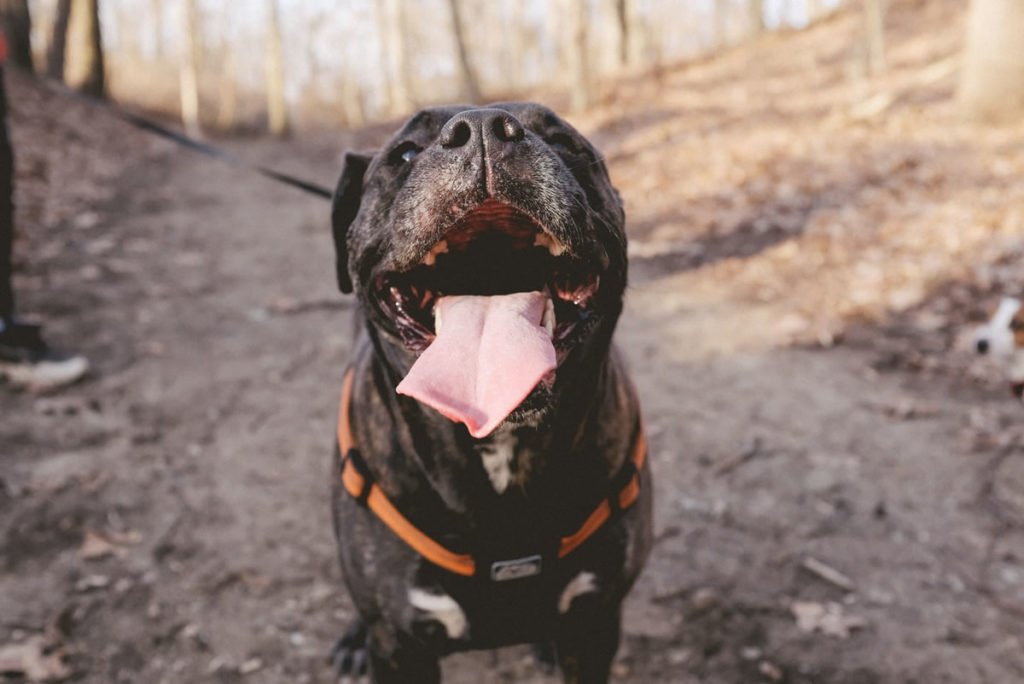When is it time to see the veterinarian(Daniel N. Pascetta, DVM) about your dog’s dental health?

Dogs belong to the canine or Canidae family of animals that are also referred to as carnivores and it is most commonly adopted as pets in our societies. Canine dental health issues are most commonly prevalent along with many other commonly occurring diseases.
Unfortunately, canine dental care is not given so much importance when we talk about our pets’ general health. Although it is precursors of many chronic diseases or health-related issues of your pets in the future. In a recent survey, the Veterinarian estimated that 85 percent of canines over age 4 have some form of gum disease.
Canine Dental care is a very vital part of your pet’s overall performance and health, your canine dental problems can cause other health and behavioral problems. Your pet’s teeth and gums should be checked at least once every quarter of the year by your veterinarian to check for early signs of a medical problem and to keep your pet’s dental cavity healthy.
When should we contact a veterinarian for our canine dental care?
Your pet’s teeth should be examined at least once every Quarter of a year by your professional veterinarian for early signs of a complication in the oral cavity and to keep your pet’s mouth healthy.
If you observe any of the following symptoms, contact us we serve Little Egg Harbor, Tuckerton, New Gretna, Ocean County NJ and the LBI region:
- Bad or foul breath
- Broken or loose teeth
- Extra teeth or retained deciduous baby teeth
- Teeth that are discolored, dark brown or covered in tartar
- Abnormal chewing, drooling of saliva, or inability to hold food from the mouth
- Reduced appetite or off feed and refusal to eat
- Pain and swelling or inflammation around the mouth
- Bleeding from the mouth
- Swelling in the Oral or Buccal cavity of the dogs
Some dogs have behavioral changes during dental health problems and are more irritable and frustrated when they have dental health problems. Changes in your pet’s behavior should be an indication to contact your veterinarian. Always be cautious when examining your pet’s mouth, because a painful animal may bite in sheer frustration.
Diseases related to canine or dogs dental Health.
Although teeth cavities are less common in dogs as compare to Human beings, they can have many of the same dental problems that Humans can face:
- Periodontal disease
- Abscesses or infected teeth
- Cysts or tumors in the mouth
- Malocclusion, or misalignment of the teeth and bite
- Broken (fractured) jaws, teeth, and roots
- Palate defects (such as cleft palate)
Here we will put light on periodontal disease as it is the most commonly prevalent dental health issue.
Periodontal disease is the most common dental condition in canines especially in dogs and it has been also noticed in cats too. When your pet is around 4 years old, he or she will very likely have some early symptoms of periodontal disease, which will get complicated as your pet grows older if we do not take some preventive measures aren’t taken.
Early diagnosis and treatment are very important because chronic periodontal disease can cause severe problems and pain for your Dog. Periodontal disease doesn’t just affect your pet’s mouth. Other medical complications found in association with periodontal disease include kidney, liver, and heart muscle changes.
Problems start when plaque builds up on your dog’s teeth and changes into a brownish tar-like substance, known as tartar. When this proliferates under the gum line, red, puffy, and reddish gums arises, called gingivitis. This tarter can easily be observed and treated.
If we don’t treat this condition, this will be advanced into periodontal disease, causing the gums weak to lose their function. This can ultimately lead to tooth loss. Periodontal disease also introduces infection, which can travel in the bloodstream to affect other organs like kidney liver and heart.
The treatment of periodontal disease involves a complete dental cleaning and x-rays may be needed to evaluate the severity and level of the disease. Your veterinarian or a certified veterinary dentist will make recommendations based on your pet’s overall medical condition and the dental health and Guide you to take the best options to consider.
What is veterinary dentistry and its impact on your Pets or canine Dental care?
Veterinary dentistry includes all the diagnosis and treatment protocols of animal’s dental health which involves the cleaning, adaptation, filing, extraction, and alignment or repair of your pets’ teeth and all other medical conditions of oral health care.
All these procedures related to dental Health should be performed by a veterinary Doctor or a Government -certified veterinary dentist -Subject to state, country, or provincial regulation authority or council. In some places, veterinary technicians are allowed to perform certain dental care procedures under the Guidelines and supervision of a veterinarian.
The veterinary dentistry starts with a comprehensive oral examination of your pet’s mouth by a veterinarian. Radiographs (x-rays) may be needed to assess the health of the jaw and the tooth roots below the gum line.
As most canines dental disease occurs below the gum line, where you can’t see it. Complete dental cleaning and evaluation are performed under complete or local anesthesia. A dental cleaning includes extract and scaling to remove dental plaque and tartar and polishing, which is much similar to the process used on your own teeth during your regular dental cleanings from a Human dentist.
Why does dental Health care require anesthesia?
When you go to the dentist, you know that little pain or discomfort or what else is being done is meant to relieve you and keep your mouth healthy. Your dentist uses techniques to minimize pain and discomfort and can ask you how you are feeling, so you accept all the procedures or techniques and do your best to keep still.
While your pet does not understand the outcome or advantages of dental procedures, and he or she reacts by moving, trying to escape and ran away or even try to invade and biting.
Anesthesia makes it possible to perform dental procedures with less stress and pain for your Dogs. In addition, anesthesia allows for a better application of techniques like surgery because your Dog is not moving around and out of risking injury from the dental equipment. If radiographs (x-rays) are required, your pet should be very still in order to get excellent images, and this is impossible without heavy sedation or anesthesia.
Although anesthesia will always have some disadvantages or involves risks. But it’s safer now as compared to past. It continues to improve so that the risks are very minor and are far outweighed by its benefits. Most pets can go home the same day of the procedure, although they might seem a little groggy or stressed for the rest of the day.
What can I do at home for my pet’s dental healthcare?
Prevention of the most common dental disease in dogs consists of frequent removal of the dental plaque and tartar that forms on teeth that are not kept clean. Regularly brushing your pet’s teeth is one of the most effective things you can do to keep their teeth healthy between dental cleanings.
Daily brushing is best, but it’s not always possible, and brushing several times a week can be effective. Most dogs adapt to the brushing, but cats can be a bit more resistive so patience and gradual training are important.
There are several canines dental products marketed with claims that they improve dental health. But not all of them are always effective or have results. So Talk with your veterinarian about any dental products, treatments, or dental-specific diets you’re considering for your pets, or ask your veterinarian for their recommendation.


